We have created a set of “seven simple rules” for leaders who want to create tomorrow today, based on our collective learning over seven decades as leaders and internal change agents in the health and care systems in England and Sweden and the work we have done with leaders in health and care in many other countries.
This is the third of eight blogs that we will be posting on BMJ Leader over the coming weeks.
Read blog one: our approach to creating the simple rules.
Read blog two: Define our shared purpose here
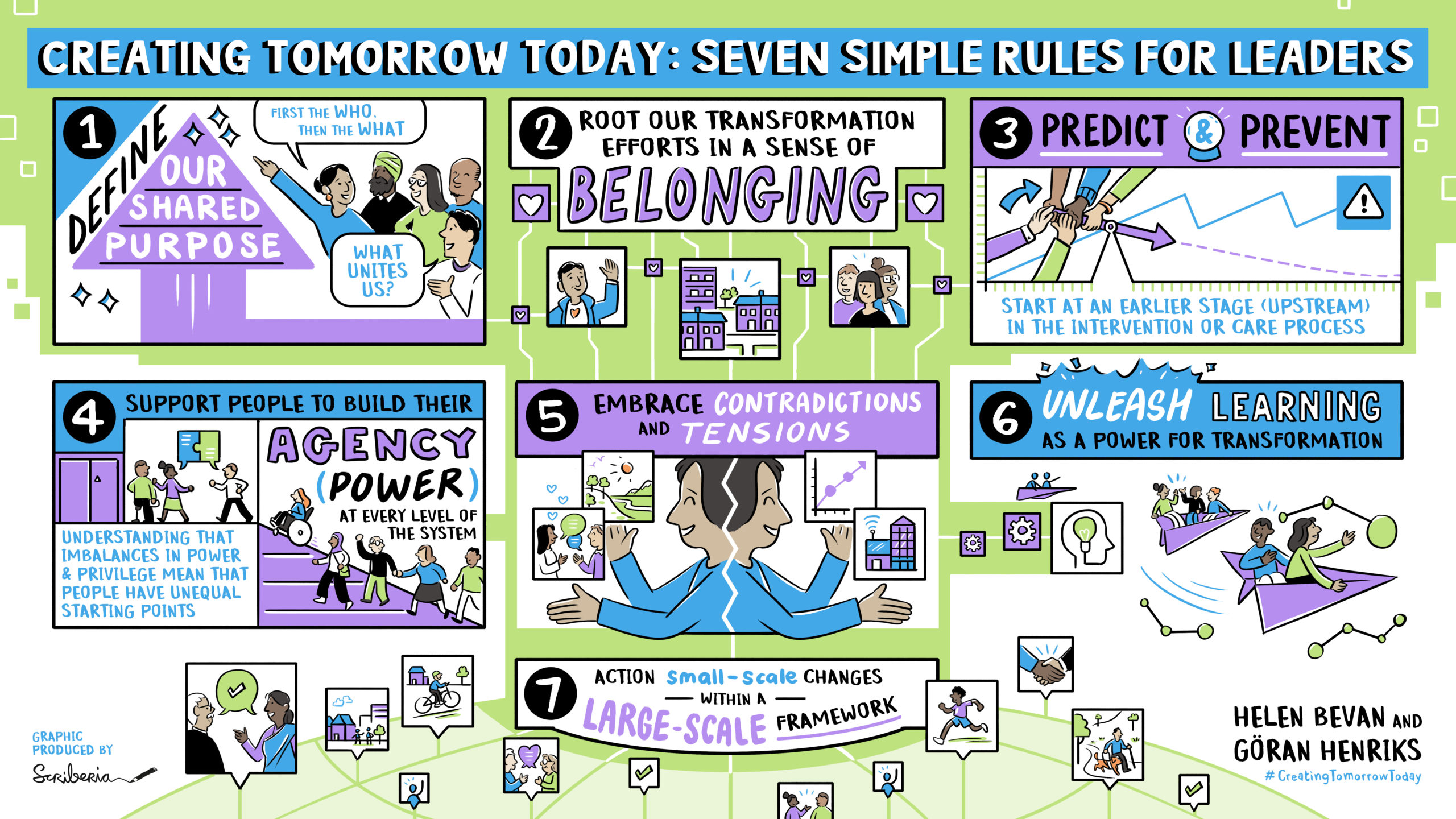
Rule no 2: Root our transformation efforts in a sense of belonging
Transformation is inherently relational: it depends on our ability to work with others to enable change. Leadership for transformation means creating a sense of belonging for everyone involved in the change. We define a sense of belonging as a feeling: of being accepted, included, respected, listened to and fully involved by those around you: in the team, organisation, change initiative, family, network or community
As humans, we are hardwired for connection; our health and wellbeing are deeply rooted in our need for community and family. When we feel we belong, we thrive, and so do the people around us. Feeling socially connected, supported, and appreciated as an individual is essential to performing well in organisations. People with a sense of belonging are almost six times more likely to be engaged.
A sense of belonging moves us away from a view of the world that is “us” versus “them” to one where everyone belongs and can play a part.
This focus on belonging is something that community activists have understood for many years. Research on people working to bring about large scale social transformation shows that a profound sense of belonging, built on relationships and community, has often provided the reason for hope despite many setbacks and has ignited their conviction to keep fighting against the odds. By contrast, the methodologies that many of us who do improvement work in organisations or systems follow typically don’t give enough emphasis to building that sense of belonging into our change initiatives. It’s time to address this.
Research by BetterUp shows that people who feel they don’t belong not only put in less work but they may actively sabotage their own teams (or change efforts). A comment from Helen: Can you think of a time when your team got transferred to a different division as part of an organisational restructure or where senior leaders decided that multiple improvement project teams should be put together into a single change initiative? That has happened to me on several occasions. I can remember sitting in the start-up meetings of the restructured team or division feeling that I just did not belong. All the positive energy that I put into the change projects I was passionate about and into the working relationships with people I trusted, was blown away. It was replaced by a tiredness, a negativity, a sense of disengagement and me finding it hard to listen to the plans for the new regime. It felt like such a waste.
That profound need for belonging can also act as a barrier to change: Often it is fear of losing the sense of belonging that stops us calling out bad practice or challenging the status quo. We stay silent to avoid the fallout that can happen when we cross unspoken demands to conform. Belonging is such a fundamental need, that people experience lack of belonging or ostracisation from a group as acutely as physical pain.
So as leaders of transformation, belonging-building is one of our core tasks. Enabling everyone engaged in the change to feel that sense of belonging ignites or kindles one of the most powerful sources of energy for change.
Belonging: inclusion not assimilation
There’s another aspect to belonging: valuing uniqueness. If we don’t also value the unique talents, background and perspectives that each person brings to the team or constituency for transformation, we don’t have true belonging (the top right hand box below); we only have assimilation (the bottom right hand box). Assimilation means that people can fit in but they have to stay on their guard. They don’t feel able to express their true selves.
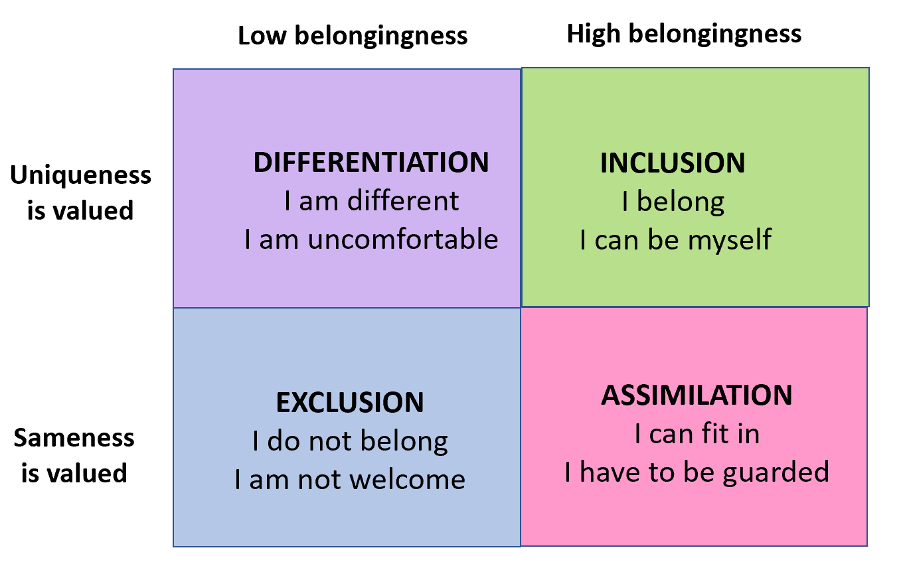
Sources: Inclusion and Diversity in Work Groups: A Review and Model for Future Research (2010) Lynn Shore and colleagues and Why belonging is such a big issue in business today (2020) Josh Bersin
Very often when we invite people with lived experience or those who work at the point of care to take part in change initiatives in health and care, we ask them to join existing groups or committees. We bring them into the existing system (assimilate them) rather than creating an environment where people feel the psychological safety to freely express their passions, experiences concerns, and opinions:
“….the way in which patients are being streamed into advisory sub committees, the way we are being used as tokens and to help tick off the right box…Where is the attitude that patients are part of the team in healthcare, that we are partners? Why are we always asked to participate inside a pre-determined frame? When will we see co-design of new policies, and ultimately co-production?”
The more people we can help to feel included in our constituency for change, the more power we create to change things. That means creating a profound sense of belonging that acknowledges and welcomes all the people who are part of the change and makes them feel valued, respected and included.
It is not surprising that many diversity and inclusion strategies in organisations are shifting towards an explicit focus on belonging. Diversity refers to the characteristics that make people unique. Inclusion refers to the culture, and behaviours that make people feel welcome. Belonging is a feeling we can all understand, and it makes the diversity and inclusion programme become real.
Belonging and place-based transformation strategies
There is a significant shift going on health and care policy, with less emphasis on changing organisations or care pathways and more focus on place-based transformation. It means the emphasis is moving to meeting the needs of local communities and tackling health inequalities. So when we talk about “belonging” in the context of place-based transformation, it also includes belonging to a place.
We (Helen and Goran) get asked to review and comment on many place-based transformation plans. Apart from the specific demographic data, the place-based plans we see are often very generic in their overall approach, to the extent they could have been written about anywhere. There is typically little content about the essence of the place that leaders want to bring out in their transformation approach.
So when we work for the first time with a group that is developing a place-based transformation plan, we usually ask each participant to bring along an image that represents the essence of the place and their sense of belonging to it. We help them use the pictures to capture the spirt of the place, as the basis for their transformation plans.
Creating a sense of collective belonging: learning from Jönköping
Any group that is seeking to create a place-based transformation strategy should consider the different components that 1) make their place unique, 2) inspire collective belonging and 3) can be an energy to kindle or rekindle improvement in health and care. As an example, Goran is based in Jönköping Region, Sweden. What is the essence of Jönköping (or what is the “Jönköping-ness”) that creates a sense of belonging for transformation? There are always multiple perspectives on this. You might say that the essence of Jönköping is sustainability, adaptability and resilience, as it was the first city in Sweden to be granted its rights in 1284. It is historically a place where people came together to connect, trade and share (köping means marketplace). Jönköping is a global centre of innovation and a place that burns brightly, being the home of the safety match. It has an active population, that punches above its weight in its sporting achievements. It is a rural centre, the venue of the largest forestry festival in the world and the farmers of Jönköping have a reputation for being adaptable, entrepreneurial people.
More than a decade ago, hundreds of people came together to co-create the place-based vision for Jönköping: “A good life in an attractive region”. That sense of belonging connected to place-based transformation has helped Jönköping to achieve consistently high outcomes across a range of public health indicators, in relation to life expectancy, health status and emotional wellbeing.
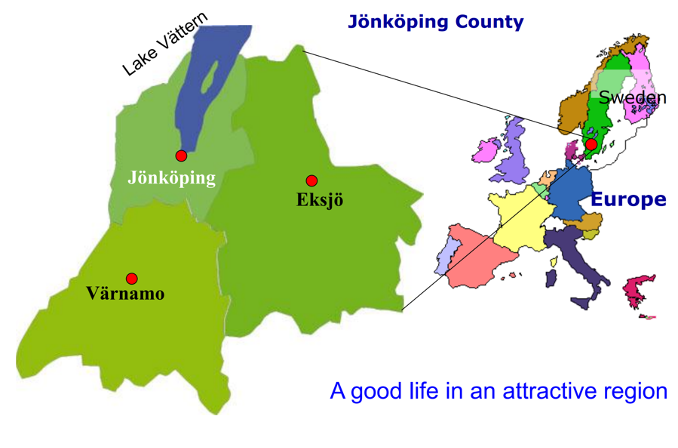
What is the essence (“the ….ness”) of your place or community that you want to bring out in your transformation approach?
How do we build belonging?
There are many actions we can take to build feelings of belonging to support our transformation efforts:
- Belonging to a place, as in the case of a place-based transformation approach
- Belonging to a constituency or group that is mobilised or comes together for a specific cause
- Belonging to a network or community
- Belonging to a team
The actions we can take as leaders differ in the varying contexts, but they are all about focusing on what unites us, welcoming diversity and difference and being inclusive. The model below comes from Josh Belsin but we have added to it. Our role as leaders of transformation is to 1) create a climate of belonging, 2) to lead in ways that create feelings of belonging and 3) to role model practices that create belonging:
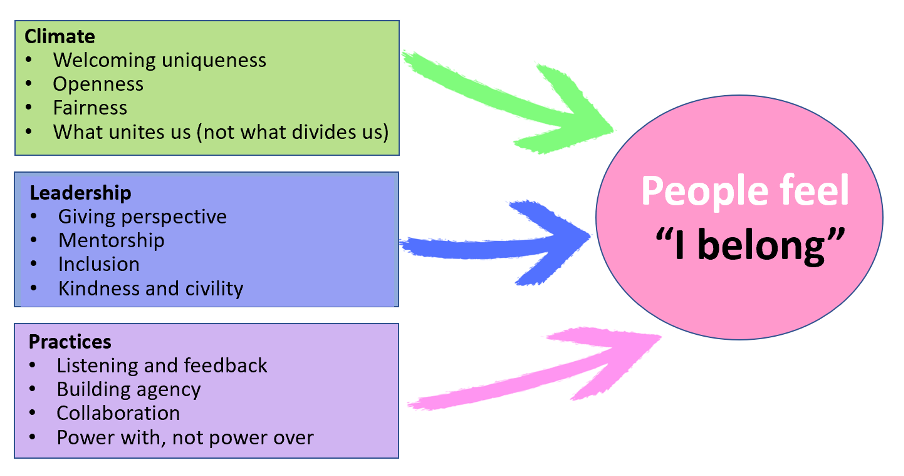
Based on Why belonging is such a big issue in business today (2020) Josh Bersin, with additional content, including from The value of belonging at work (2020) BetterUp
Research suggests that the most powerful way to help people move from a feeling of “unbelonging” to belonging is to support them to build their own agency – the power to make a positive difference. We will talk about how to do that in blog number five. You can see here how our simple rules are deeply connected with each other. We identify our constituency for change within rule number one: “define our shared purpose”, with a focus on the “our”. We root our transformation efforts in a sense of belonging (rule number two): the belonging relates to the people who are part of the “our” in rule number one. We support people to build their agency (rule five), in the knowledge that this is one of the most effective ways of helping people to feel they belong (rule two).
A case study in belonging: the Barts shielders
Barts Health is a group of five hospitals in the English National Health Service, located in east London. On 29th March 2020, people who worked at Barts Health and who had underlying health conditions so were thought to be at very high risk of severe illness from COVID-19 were given “advice to shield”. In the first surge, this affected 648 people who work for Barts Health. Over time, this group referred to themselves as “shielders.”
Overnight, the shielders were instructed to confine themselves at home, adopt infection control measures with family members, and many were told by letter not to leave their homes throughout the pandemic because of their risk levels. This meant a loss of contact with their teams, their wider NHS family, their vocations, and to key sources of mental health support.
The “Barts shielders” group was a grassroots initiative set up to support the shielders virtually. The aims were to:
- Provide a psychologically safe space where shielders felt heard, seen, respected, and valued
- Cultivate relationships and opportunities for consistent social support to counteract mental distress
- Harness the talents and abilities of staff who are shielding
- Build the capabilities of people at Barts Health to connect virtually
The only thing that the group members had in common was that they were shielding and that their participation in the shielders group was voluntary. Yet over a year later, the Barts shielders are still united and going strong. They have built a profound sense of belonging amongst a highly diverse group of people. As a result, they have mediated the worse effects of the pandemic and supported those worst affected by it amongst the shielders group. They have enabled the shielders to make a much greater contribution to the work of the organisation and have positively influenced the working culture at Barts Health. Several people policies have been changed as a result.
How did the Barts shielders build belonging?
- They created a climate of belonging
Over, time, two formal virtual spaces were created – Shield Connect and Shield Next Steps. Shielders themselves set up informal spaces and routes to join in – a closed Facebook group; Singing Space/The Choir, a WhatsApp group and a newsletter. There was very wide engagement and a focus on making each contributor feel secure through the way activities were structured. This collaborative, secure space brought in the Human Resources team, trade union representatives, the psychology and employee well-being services and the disabled staff network, (BartsAbility) to support the shielders. It was a significant effort to make people feel valued, listened to and supported. As Fidelia Essell-Uwagbae says: “It made me realise that I still have something important to offer even if I’m at home. Other shielders are feeling it differently too, we all need to support each other and be supported”.
- They led the group in a way that appreciated the uniqueness of each person but was highly inclusive
Dan Young who was one of the supporters of the Barts shielders describes it thus: It’s also become clear just how important the absence of labelling has been to building trust and dealing with power differences. Each person was defined by what they brought with them into the space, not by their salary band. We introduced ourselves and knew each other by first names. Specific roles, positions and status were an irrelevance. And, nobody knew each other’s underlying health conditions.
- They utilised practices that reinforced the sense of belonging
The team at Barts collaborated with Alexis Palá of Y Lab at Cardiff University to support the virtual community of shielders. Alexis, who uses facilitation and participatory methods in research, introduced a practice called Liberating Structures to include everyone in participation and decision making. A significant effort went into the support process for the shielders with a deep focus on doing with and being led by shielders rather than doing to. There were over 500 hours of external volunteer facilitation support and 150 hrs of organisational and peer support, all led by volunteers
Mary-Cate MacLennan, Senior Improvement Adviser at Barts Health, described the initiative: “Quality virtual facilitation has been a key part of the personal, professional, and social growth we have seen during the COVID 19 crisis and we hope that our initiative, and learning can be a beacon in how to create a more integrated, connected Barts Health”.

Listen to more about the Barts Shielders initiative here and here at 40:04. Read more about Barts shielders initiative here
Key questions to reflect on in blog three:
- What is the essence (“the ….ness”) of our place or community that we want to bring out in our transformation approach?
- To what extent have we really got to know the people in our teams or our fellow changemakers and do we understand and appreciate the unique gifts that each person brings?
- Are we asking people if they feel they’re being included, feel they have power over the work or tasks they’re being asked to do, and feel that their ideas are valued?
- Are we making the space and/or using facilitating leadership approaches in a virtual world (where the lack of direct contact makes feelings, emotions and reactions harder to gauge) to build belonging?
Please join in the conversation on Twitter, adding #CreatingTomorrowToday and @BMJLeader to your tweets.
Helen Bevan
Helen Bevan @HelenBevanTweets is Chief Transformation Officer with the NHS Horizons team, England
Göran Henriks
Göran Henriks @GoranHenriks is Chief Executive of Learning and Innovation with Region Jönköping County, Sweden
Declaration of interests
We have read and understood the BMJ Group policy on declaration of interests and declare the following interests: none.
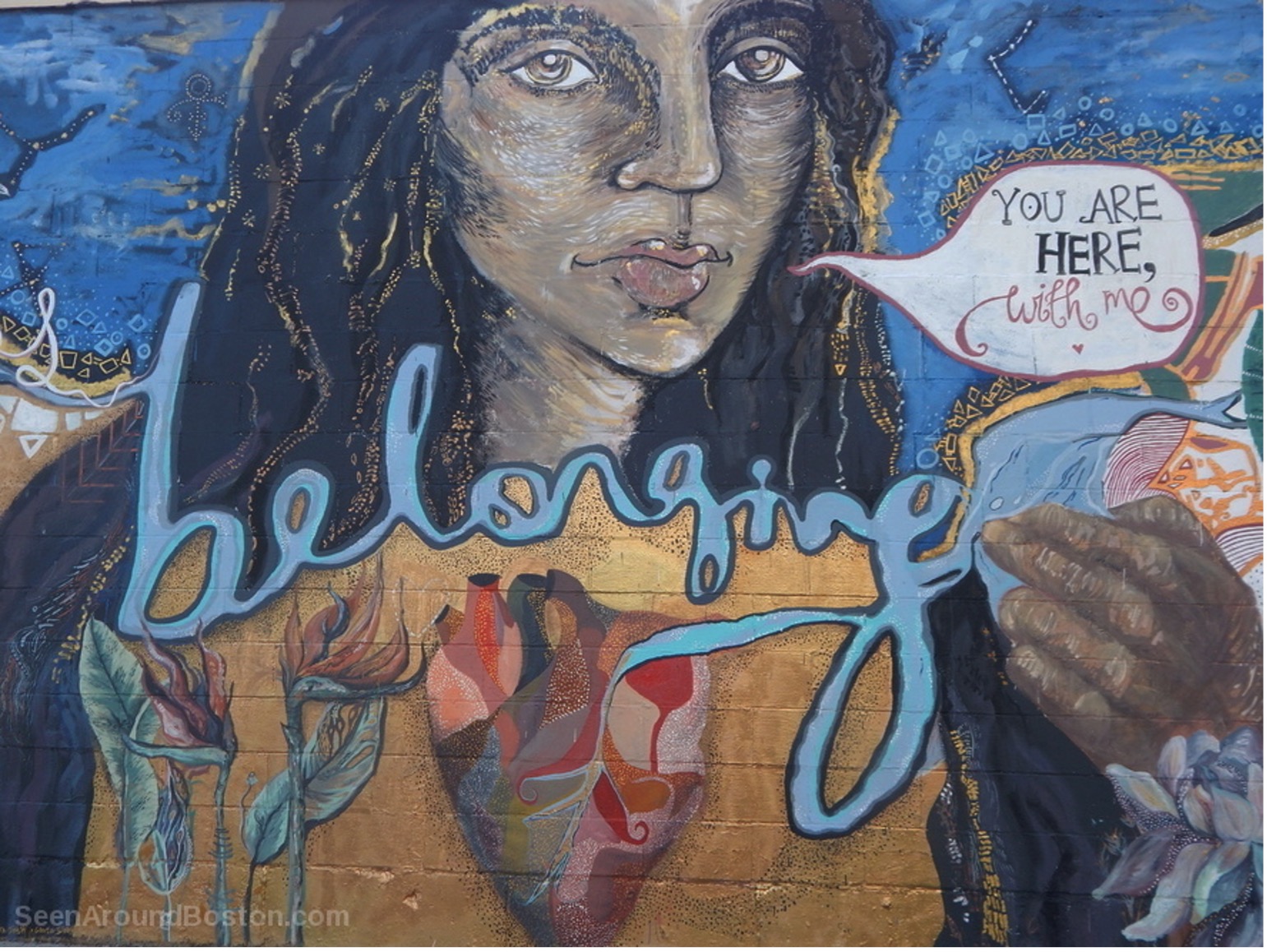
Fearless Collective Belonging mural by Shilo Shiv Suleman and NuVuStudio via Sahana Chattopadhyay